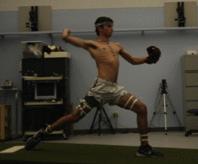Physical Address
304 North Cardinal St.
Dorchester Center, MA 02124
Osteochondritis dissecans (OCD) of the capitellum is a condition of the lateral elbow that often affects skeletally immature athletes, especially those who repeatedly subject the radiocapitellar joint to compressive forces. Ultimately, repetitive stress of this nature leads to disruption of a localized portion of the subchondral bone and, if allowed to progress, the overlying articular cartilage. The etiology of this disorder is multifactorial and often cannot be determined. The progression of capitellar OCD may result in significant pain, loss of motion, inability to perform weight-bearing or overhead activities, and radiocapitellar degenerative change in approximately 50% of patients ( ). Treatment is based on lesion size and stability as well as the condition of the surrounding articular cartilage. If conservative treatment is not possible or fails, surgical options include open debridement with fragment excision, arthroscopic debridement and marrow stimulation, fragment fixation, closing wedge osteotomy of the distal humerus, osteochondral autograft, and osteochondral allograft. Each of these interventions has had variable short-term outcomes, and the ideal management strategy has yet to be determined.
Despite the uncertainty of its etiology, symptomatic OCD of the capitellum arises primarily from repetitive stress to the elbow ( ). Provoking compressive forces on the capitellum commonly occur in the dominant arm of overhead throwing athletes and from weight-bearing stress in gymnasts in the second decade of life. Overhead athletes place the medial elbow stabilizing complex under significant repetitive stress with consequent lateral elbow compression and shear forces. This occurs primarily during the late cocking phase of the throwing cycle as the radiocapitellar articulation, a prime secondary stabilizer to valgus stress, experiences as much as 60% of the axial compression force across the elbow ( Fig. 32.1 ). Along the same lines, female gymnasts invoke a similar injury mechanism through repetitive loading of the radiocapitellar joint with their arms in extension ( ).

The pathophysiology of OCD resembles that of mechanical trauma to articular cartilage. Repetitive microtrauma in the susceptible elbow initiates fatigue fracture, resorption, and ultimately fragment separation from the underlying subchondral bone, as demonstrated by through rabbit models. With time, the overlying articular cartilage begins to break down and is increasingly vulnerable to shear stress because of inadequate subchondral osseous support, leading to separation, fragmentation, and loose body formation ( ). The Research in Osteochondritis of the Knee (ROCK) study group has come to define OCD as “a focal, idiopathic alteration of subchondral bone with risk of instability and disruption of adjacent articular cartilage that may result in premature osteoarthritis” ( ). This same phenomenon extends to OCD of the capitellum.
In concert with traumatic insult, the vascular anatomy of the distal humerus underscores ischemia as a likely contributor to OCD of the capitellum. The blood supply to the capitellum arises primarily from posterior perforating vessels that traverse the epiphyseal articular cartilage without metaphyseal collateral circulation ( ). Through a cadaveric ink-injection study of the skeletally mature elbow, determined that the main arterial contributors to the lateral elbow are the radial and middle collateral, radial recurrent, and interosseous recurrent arteries. Repetitive stress to and compression of this tenuous blood supply may cause ischemia of the subchondral bone within the capitellum and the characteristic osteonecrosis observed in OCD. Hence, this compromise of the subchondral support structure promotes articular cartilage fragmentation and loose body formation ( ).
Patients who present with OCD of the capitellum are typically athletes between ages 11 and 21 years ( ). OCD of the capitellum is more commonly found in male adolescent athletes engaging in repetitive overhead activities and has been associated with baseball, gymnastics, tennis, weight lifting, wrestling, and cheerleading. The dominant arm is more commonly involved, although bilateral involvement has been reported ( ). Athletes with OCD of the capitellum often complain of diffuse, nonspecific pain with activity. The most common early symptom of a capitellar OCD lesion is a gradual, progressive onset of lateral elbow pain. Patients may also complain of accompanying elbow stiffness and loss of motion. Athletes rarely recall any specific trauma to the elbow. Rest and antiinflammatory medications are typically effective in relieving the pain, features that may contribute to the delayed presentation that often occurs with this pathology. In more severe cases, athletes may develop mechanical symptoms, such as catching, clicking, and locking, suggesting the presence of intraarticular loose bodies.
Physical examination reveals tenderness over the radiocapitellar joint in the posterolateral elbow in some cases. Crepitus at the elbow may be palpable with flexion and extension. The elbow should be examined for any evidence of effusion. With delayed presentation, patients may lack the terminal 15 to 30 degrees of elbow extension ( ). The radiocapitellar compression test is a useful physical examination maneuver for diagnosis. With this maneuver, passive forearm pronation and supination with the elbow in midrange flexion and extension during application of an axial load recreates pain at the radiocapitellar joint. An elbow ligamentous stability examination should be performed to assess for both ulnar collateral ligament insufficiency and posterolateral rotatory instability. Athletes often present to the physician’s office after a period of rest, lowering the diagnostic yield of physical examination. For this reason, the senior author (CWN) often exercises athletes in the office (i.e., throwing baseballs) to provoke their symptoms.
Panner’s disease must be considered in the differential diagnosis of a young athlete with elbow pain. This disorder is an idiopathic osteochondrosis of the entire immature capitellum. It occurs in a younger age group (4–12 years) than capitellar OCD and is predominantly found in boys. The involvement of the capitellum is more diffuse, with radiographs revealing loss of the normal contour of the capitellum ( ). Unlike OCD, Panner’s disease is a self-limiting process that normally resolves completely with activity modification and rest ( ).
Become a Clinical Tree membership for Full access and enjoy Unlimited articles
If you are a member. Log in here